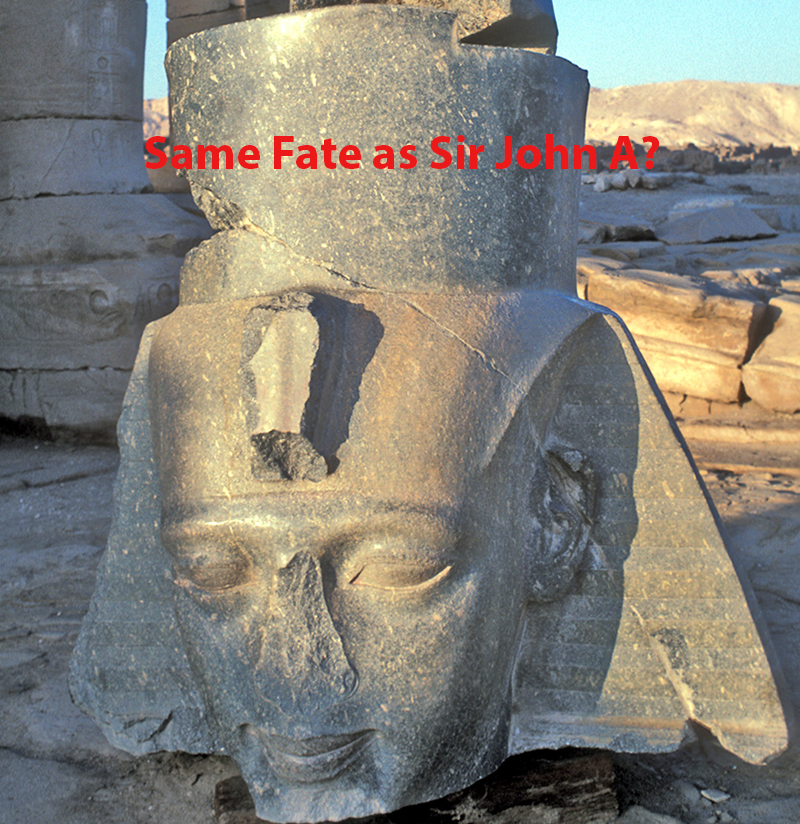
Statue Wars
The Black Lives Matter (BLM) protests against systemic racism, happening now all over the western world, feature something that didn’t characterize the American civil-rights protests of the 1960s — the toppling, defacing, beheading and removal of statues of historical figures, in a series of events referred to by some as “the statue wars.” What’s interesting about this is that these statues don’t include merely the statues of Confederate generals, Bristol slave-traders and monsters like King Leopold of Belgium, who ran the Congo as a brutal slave state for three decades. For BLM to destroy those icons is understandable, and possibly a public service.
The vandalized statues also include statues of the architects of the American Revolution and drafters of the Declaration of Independence and the Constitution, heroes like Washington, Jefferson and Madison. These notables offend BLM because they kept slaves and, in Jefferson’s case at least, had offspring by them. More importantly, perhaps, these men left slavery in the system they built. More recent Presidents, Lincoln, Grant and Woodrow Wilson, have taken a hit too, evidently for uttering segregationist ideas. Teddy Roosevelt, a great environmentalist so long as he was allowed to shoot trophies wherever and whenever he wanted, may suffer the removal of his statue from the entrance to the American Museum of Natural History, where most of the trophies went. The statue features people of colour (POC) walking, subserviently, beside his horse.
In Canada, too, a crowd of colonial and national notables are having their statues defaced. Here, protests (increasingly involving BLM since 2016) focus almost entirely on the historical treatment of aboriginal peoples. Many of the protesters involved are climate-change activists, some of whom regard, or find it convenient to regard, mining, logging and oil-and-gas developments as the appropriation of aboriginal lands and, therefore, instruments of racism or (even) genocide. Colonial notables under censure include Lord Cornwallis, who established a bounty on aboriginals (after some settlers were scalped), and Baron Amherst, who choreographed the British conquest of New France and was later governor of Virginia, who planned to spread smallpox among the aboriginals. Understandably, the Canadian BLM movement doesn’t like these men.
But that isn’t the extent of it. Statues of Prime Ministers Sirs John A. MacDonald and Wilfred Laurier are also under attack.
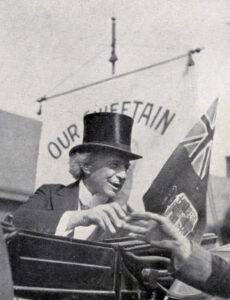
Sir Wilfred Laurier
MacDonald led the government that set up the hated residential schools and presided over the implementation of reprisals following the Metis rebellions in Manitoba and Saskatchewan. Laurier wrote the Indian Act, seen now as a prime example, and the root cause, of systemic racism against Canada’s aboriginal peoples. But MacDonald and Laurier were also among the architects of Confederation — Canada’s independence from Britain — and authors of the British North America Act, part of Canada’s constitutional package. And Laurier’s Indian Act, while paternalistic and racist in the extreme in its original form, did give special status to aboriginal peoples, provided for the maintenance of reserves and the provision of medical care and education, and has been revised over the years, in consultation with aboriginal leaders, to better serve their needs. When, in 1969, the Federal government threatened to repeal the Indian Act, aboriginal leaders objected; it was better than what the government was proposing as a replacement, which was seen as a template for total integration.
Memorials to the discoverers and explorers of the Americas are also being abused, mostly because they are offensive to aboriginal peoples. Though the motivation of many of these heroes was probably more scientific than proprietary, they did usually claim territory for their sponsoring sovereigns. Most early explorers were not inclined to settle down on the territory they found or mapped, but their activities (maps, descriptions, contacts with locals, etc.) facilitated settlement and the disease, wars, slavery and genocide that followed. About a half dozen statues of Christopher Columbus have been attacked. Ditto the statue of Captain George Vancouver in the Canadian city named after him. In California, the Spanish missionary Junipero Serra has had his statue pulled down, and in New Mexico statues of conquistador Don Juan de Ornate are now in storage. In Australia, Captain Cook’s statues are taking a beating.
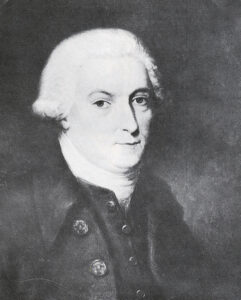
Captain Vancouver
Statues of Columbus, the ur-explorer, are especially loathed by BLM. In Boston, his statue was beheaded; in Richmond, Virginia he was beheaded and thrown into a lake. In San Francisco, the message “Destroy all monuments of genocide and kill all colonizers” was sprayed on him. Evidently the statue killers in BLM think that Columbus should have contemplated the implications of his discovery, sworn his crew to silence and, on his return to Spain, said nothing to his employers about what he’d found.
There are more oddities. Despite his leadership in the fight against Hitler, who was arguably history’s number-one genocidal racist, Winston Churchill’s statues have recently been defaced with graffiti calling him a genocidal racist — likely because, at the end of World War II, he suggested that Britain should keep its empire. Still more oddly, a couple statues of Churchill’s old antagonist Mahatma Gandhi have been desecrated in the course of the protests, one in London and one in Washington. The one in London had “racist” written on the street in front of it. Why BLM supporters would do this is anyone’s guess, but there may be a hint in the fact that Gandhi was assassinated by a Hindu extremist for being too tolerant of Muslims. A Hindu faction of the British BLM may have concluded that, if he liked Muslims, he therefore must have hated Hindus.
Finally, in Canada at least, ordinary “settlers,” as we are now called, are having memorials and memories alike attacked. Gassy Jack’s statue in Vancouver’s Gastown area is likely to be removed; he may have been a colourful founder of downtown Vancouver, but he also married a 12-year-old aboriginal girl and had a family by her (she lived long enough to be interviewed by historians, and did allow that he was a nice guy when sober). The standard histories and family narratives of these marauding hordes of settlers, from Scotland, Scandinavia and the Ukraine, because they seldom mention these people maliciously fencing the Blackfoot off their lands, destroying the buffalo and the grasslands, and filling the area with oil wells and pumpjacks, are decried. It may be that acres of prairie graveyards, full of memorials to these people, will have to be bulldozed.
The statue wars are, even though the targets are dead people, witch-hunts — one of a number of means by which BLM is seeking to identify, shame, and end the influence of the historic perpetrators of systemic racism, which is to say, racism embedded in law, regulation, and policy. The perpetrators of systemic racism are the politicians who devised these three things, the authorities who enforced them, and thus by implication the voters who approved them, or didn’t object. All are treated as implicated in creating, refining, supporting and enforcing the rules that make POC economically poorer than whites. In the U.S., black households earn on average 60% of what white households earn, and so are disadvantaged when it comes to access to health care, the judicial system, and education.
According to Naomi Jackson, “the gap between infant mortality rates for black and white babies is wider now that it was during slavery.” Also, while American women are more likely to die in childbirth than women in the rest of the developed world, black women are three to four times more likely to die than white women. In 2015, Canada was chastised by the U.N. Human Rights Committee for laws and policies that discriminate against aboriginal people. Violence against Indigenous women, violation of land rights, extreme poverty on reservations, and disproportionally higher representation of aborigines in prisons were cited as issues.
But, in attempting to rectify systemic racism, isn’t there something silly about going after statues of people who are dead and can’t change what they did? The implications of the war on statues are frankly ridiculous. If all European settlers in Canada were morally compromised then so too are their descendants, because they’re enjoying the benefits of their ancestors’ nefarious activities. Endless reparations are in order, including the return of all of Canada to its original aboriginal owners and the departure of all whites (and their former slaves) back to whenever they came from. On the other hand, if slavery is the issue, assorted aboriginal luminaries like Joseph Brandt and various other Mohawk, Iroquois and Haida chiefs who kept or raided for slaves, need to be “queried”. Some of the artifacts of Haida civilization, their totem poles and lodges, parts of which were no doubt constructed by those slaves, would have to be bulldozed. The whole enterprise of attacking the past smacks of what Amoz Oz called, in reference to the thinking of the Israeli ultra-orthodox right, “moral autism.”
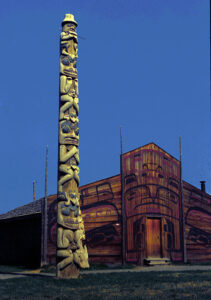
In the excitement of chasing witches, I wonder how many BLM protestors are conscious of the beams in their own eyes. Are they supporting more modern forms of slavery built into the practices of transnational corporations, using cell phones containing rare metals mined by children in the Congo, wearing clothes produced by slave workers in Bangladesh, burning oil in cars and on planes that is produced on and transported across stolen aboriginal land, eating food produced by poorly treated immigrant workers? Aren’t they demanding more of Washington, Jefferson, MacDonald and Laurier than they’re asking of themselves?

Second, attacking dead icons is the sort of historical and cultural revenge on the past that typically characterizes fanatical movements — the Taliban blowing up statues of the Buddha, ISIL blowing up the remnants of Greek and Roman civilization in Syria, the Nazis burning Heinrich Heine’s books because they were offended by the idea that a Jew could write German poetry, the Red Guards trying to erase all vestiges of European culture in China. What said fanatical movements envision as the ideal civilization, free of all these remnants of evil, doesn’t bear looking into. BLM has offered no clue as to what Washington D.C. would look like once its name is changed and its monuments are eradicated, and what the morally pure and historically uncompromised Mother-Theresa politicians headquartered there would be governing once the U.S. Constitution was repudiated as the work of perverted slave-holders.
Third, and much more immediately, it’s against BLM’s interests to attack politicians indiscriminately, assuming the purpose of the movement is to shock politicians and the public into changing the laws, regulations and policies that perpetrate systemic racism. BLM disrespects and thus alienates those politicians and activists —from Jefferson, who did set about to “emancipate the slaves,” and did make some progress through his presidency, to Martin Luther King Jr., who put his hope in peaceful protest and the system created by America’s founders:
When the architects of our republic wrote the magnificent words of the Constitution and the Declaration of Independence, they were signing a promissory note to which every American was to fall heir. This note was a promise that all men, yes, black men as well as white men, would be guaranteed the unalienable rights of life, liberty, and the pursuit of happiness.
King was intent on getting full value on that promissory note. He and his followers succeeded in getting at least more value than they had, and BLM is justifiably trying to improve on that. Note too that King didn’t ever suggest that owning (and having sex with) slaves prevented the American founders from being able to produce “magnificent words” and set in motion a political system that promised hope to all citizens.
The BLM war on statues coincides with the equally silly “cancel culture” movement, except that cancel culture hunts for living witches. Cancel culture, like BLM, took its name from a Twitter hashtag that originated among blacks. As a verb it means, “to shame, shun or boycott a public figure for objectionable behaviour or opinions” (Merriam-Webster). Mostly it concerns “Me Too” protests against abusers and harassers of women, but sometimes the accusation is racism. Sometimes you try to cancel a person’s career as a substitute for taking that person to the law, or because that person has been so taken and has gotten off on, in your opinion, a technicality. Sometimes that person, e.g. Woody Allen, Kevin Hart, Shane Gillis, and Roseanne Barr, has broken no law. Cancel culture can mean hurting others (stalling their careers) by hurting yourself (not enjoying their art) — or, as they used to say, cutting off your nose to spite your face.
The statue wars fit even better with the campus witch-hunts that date back to the 1980s and the start of what’s now known as “the victim’s revolution.” These witch-hunts have been conducted for the purpose of rooting out, at first, racism and sexism, and later, other crimes like lookism, ableism and ageism (BLM appears to be against these too). The witch-hunts applied, first, to canonical writers, mostly dead and always European, and then to professors who adhered to more traditional interpretations of literature and science — most famously, Jordan Peterson and Kathleen Lowery in Canada and Michael McConnell and Gordon Klein in the US. The stodgily humanistic National Association of Scholars has produced a list of some fifty names of the persecuted (see https://www.nas.org/blogs/article/tracking-cancel-culture-in-higher-education).
Then, around 2013, the students and faculty started a campaign against statues.
The method on campus for putting witches on trial is called “deconstruction” and it is carried out in the name of an intellectual ideology, or “theory,” which is referred to as “poststructuralism,” from which “postmodernism” and “post-colonialism” subsequently derived, along with a bristelingly hostile raft of weaponized terminology. Tracing the proliferation of academic theories is about as meaningful as tracing the family tree of an inbred Orangutan, but the process acquired a popular history as a series of concurrent “wars:” the canon, campus, and theory wars. In these wars, attempts were made to strip the literary canon of racists like Mark Twain and Joseph Conrad (both used the “N” word), to change campus protocols of proper speech and behaviour (don’t use offensive pronouns or “trigger words” like “individual”), and to put liberal humanists and scientists out to pasture by replacing inductive reasoning with “auto-ethnographic” reasoning — reasoning from personal conscience confirmed by the people around you or by your friends on Facebook. Auto-ethnography considers research into, say, historical context, irrelevant when judging a person’s ethics: Because Shakespeare hurt your feelings by appropriating the voices of women, Jews and Moors, he can no longer be read by right-thinking persons.
One recent description, from The Economist of September, 2017, of a typical battle in the campus wars, concerns the term start-up at Reed College, Oregon. In this story, the students are seen hunting witches, not in the form of statues, but of a specific professor: Lucia Martinez Valdez. She advertises herself (victim credentials have become almost as essential as degrees in establishing teaching credibility) as “mixed race and queer.” She teaches humanities, classes that were being boycotted by students as too “Eurocentric” and “Caucasoid” because the courses feature “inappropriate” focus on the European canon.
Valdez decided to begin her first class by asking for pity. She begged the students not to boycott her class as she was still suffering PTSD from the boycotting of her previous-semester’s class on Sappho. In explicating Sappho’s poems, she had made the mistake of revealing herself to be a “cis-bitch” — taking too binary an approach to sexuality. To this crime she seems to have confessed. In the new semester, her appeal for pity worked for a few days; students merely donned black clothing (?) and sat silently. But soon they began to berate her. She started to cry, and ran out of class. Her problem in the new semester was that she was acting like a white supremacist by not adamantly opposing the Humanities syllabus (in the sense that she was still teaching it, as she’d been hired to do). Another mistake was her T-shirt, which said, “Poetry is Lit.” The students took “lit” as appropriation of black slang. Finally, she didn’t properly prepare students for her use of “trigger-words” to ensure that they would not be traumatized during her lecture. She told The Economist that she no longer knew how to argue her case with students or even, really, how to teach them: “students don’t believe in historicity or objective facts (they denounce the latter as being a tool of the white cisheteropatriarchy).”
The Economist seemed short on sympathy for Valdez; she and her colleagues had obviously taught the students the values by which she was now being burned, and had provided the vocabulary they were using to abuse her. The magazine regarded the students with a kind of bemusement, as if they were only a bunch of spoiled children who had found a way of avoiding classes by torturing their professors.
But that attitude toward the students has since changed. Four generations of students have now been trained to hunt witches. The Economist now (11 July 2020) recognizes that this training has gone street-side: “Leaders like Frederick Douglas and Martin Luther King used vigorous protest and relentless argument to push society towards their vision . . . . But a dangerous rival approach has emerged from American universities. It rejects the liberal notion of progress.”
It should not be surprising that campus politics would move off campus. Forty-seven percent of the U.S. population has some kind of postsecondary training or education, and that percentage is known to be more interested and involved in politics than the rest of the population. What I’d call the “campus contingent” of BLM bulks up BLM protests, just as the Students for a Democratic Society bulked up the civil rights and anti-war protests of the 1960s. But the mindset of college and university graduates has changed radically since then.
The students and graduates no longer believe, as The Economist says, in systemic progress. The new mindset was described early in the campus wars, and in detail, by the journalist Dinesh D’Souza, in a March 1991 feature article in The Atlantic entitled “Illiberal Education”: “all rules are unjust and all preferences are principled; justice is simply the will of the stronger party; standards and values are arbitrary . . . ; individual rights are a red flag signalling social privilege and should be subordinated to the claims of group interest; all knowledge can be reduced to politics and should be pursued not for its own sake but for the political end of power; convenient myths and well-intentioned lies can substitute for truth; double standards are acceptable so long as they are enforced to the benefit of minority victims; disputes are best settled not by rational civil debate but by accusation, intimidation, and official prosecution . . . ; a multiracial society cannot be based on fair rules that apply to every person but must rather be held together with a forced rationing of power among separatist groups.”
How this new mindset plays out with BLM is indicated by a 7 July Washington Post article about a confrontation between protestors and the mostly black Fayetteville, North Carolina, city council. Fayetteville had voted to write, “Black Lives Do Matter” on its historic Market House, where slaves were once traded. This was a compromise forged with the single white council member (a Trump supporter), with the idea of achieving unanimity. BLM protestors objected to what they regarded as a fuzzifying of their slogan. Council member Christopher Davis, 47, an African American Army veteran and pastor, noting the mix of black and white residents in the city, answered: “I want to keep people together, number one, and move us forward.” When BLM protestors objected, Davis called them “microwave kids.” They want things to change instantly. He added, “It don’t happen overnight. It takes time to vet policy.”
The microwave kids were quick with their answer, as the article described: “’Something that I have learned is that everybody who is African American is not truly African American,’ said Myahtaeyarra Warren, 22, one of the black activists questioning council members in the parking lot.” In other words, Davis is not truly black. He’s a witch, or more specifically in this context, a traitor to his race.
Like the victims’ revolution, which began with feminist and New Left (democratizing) attacks on “the military-industrial complex” or patriarchy, BLM has, since its inception around 2015, broadened its cause beyond “black lives.” The potential list of its indicators for witches has, accordingly, been expanded. BLM allows its name to be used by autonomous activist groups who make “commitments” to:
- “Collectively, lovingly and courageously working vigorously for freedom and justice for Black people and, by extension, all people . . . .”
- “Practicing empathy; we engage comrades with the intention to learn about and connect with their contexts.
- “Embodying justice, liberation and peace in our engagements with one another.”
- “Acknowledging, respecting and celebrating difference(s) and commonalities.”
- “Globalism. We see ourselves as part of the global Black family.”
- “Fostering a queer-affirming network . . . freeing ourselves from the tight grip of heteronormative thinking . . . .”
- “Embracing and making space for trans brothers and sisters to participate and lead . . . doing the work required to dismantle cis-gender privilege . . . .
- “Collective value. We are guided by the fact that all black lives matter, regardless of actual or perceived sexual identity, gender expression, economic status, ability, disability, religion, immigration status or religion.”
- “Fostering an intergenerational and communal network free from ageism.”
- “Dismantling the patriarchal practice that requires mother to work ‘double shifts’.”
- “Disrupting the Western-prescribed nuclear family . . . by supporting each other as extended families and “villages” that collectively care for one another . . . .”
- “[Being] unapologetically black.”
- “Building a Black women affirming space free from sexism, misogyny, and male-centeredness.”
The 13 BLM commitments are, first of all, morally and politically commendable for anyone who wants a more egalitarian and fair society. But, like the statue wars, they are also Reed College gone street-side. The commitments are also pretentious and smug, patting themselves adverbially on the back as they go: “collectively, lovingly and courageously working vigorously.” They work hard to keep “black” in the forefront when obviously there’s no reason for it to be there — blacks are just one victim group among many. It seems to me that the BLM slogan should really be, “All Lives Matter.” The enemies of BLM, meanwhile, are uniformly abstract: “heteronormative thinking,” “cis-gender privilege,” “ageism,” “patriarchal practice,” the “nuclear family,” “sexism,” “misogyny,” and “male-centeredness.” This is campus talk.
Witches used to be identified by a similarly wide-ranging and/or shifting set of criteria: warts, birthmarks, life-styles, proclivities, knowledge (especially of female healing), and friendships. It was easy for authorities to produce “evidence” against witches, and for unfriendly neighbours, angry kids, or disappointed lovers to find reasons to turn people in as witches. And to feel smug about turning them in, because, unlike the witches, they were god-fearing, pious, and wore two pairs of undershorts. BLM witch-burners are, proudly, “collective,” “communal,” “global,” “loving,” “courageous,” “unapologetic” and “free.”
BLM is prone to witch-hunting because it has the same identity problem as all protest movements, including King’s civil rights movement of the 1960s. There are two extreme positions: you can work through the system, as King chose to do, protesting peacefully to garner public attention, informing sympathetic politicians about corrective policy, and working to gather votes for supportive politicians and parties. Or you can get violent, attracting attention but eventually, if things get out of hand, denouncing the system as irredeemable. When—and where—does busting up storefronts, burning cars and vandalizing statues turn from being an attention-getting tactic to a direct attempt to overthrow the system — or, in campus lingo, the patriarchy or western civilization—in order to impose new forms of authority?
An article in the New Yorker of 14 March 2016, reprinted in that magazine’s 27 July 2020 issue, explains how BLM’s identity problem manifested itself early, at a meeting of African-American leaders at the Obama White House on 18 February 2016. Included were some now-prominent leaders of BLM chapters. Points of discussion included police and vigilante violence against blacks — specifically the cases of Trayvon Martin, Michael Brown, and the Emanuel A.M.E. Church in Charleston. But not all BLM leaders attended: “The split . . . reflected a larger conflict: while Black Lives Matter’s insistent outsider status has allowed it to shape the dialogue surrounding race and criminal justice . . . it has also sparked a debate about the limits of protest, particularly of online activism. Meanwhile, internal disputes have raised questions about what the movement hopes to achieve, and about its prospects for success.” So far, there is no agreement on the basic issue of whether or not change can happen through electoral politics — of whether “BLM could move beyond reacting to outrages and begin proactively shaping public policy.”
So long as BLM continues to act like a campus protest group, its future is dim. This would be a shame. It has the support of a majority of Canadians and Americans, who understand that police brutality against blacks and indigenous people has to be stopped. Some politicians have already responded positively with new law and policy — in New York State, a ban on chokeholds, the repeal of 50-A (a law that shielded officers’ personnel records from scrutiny), and the empowerment of the attorney general to serve as independent prosecutor when unarmed civilians are killed by police. Colorado and other states have ended of what was called “qualified immunity” for officers. In these and other places, budgets are being redirected to emphasize training and prevention over enforcement. It has resulted in the creation in Dallas, Salinas, and Minneapolis of police-free zones. Canada was already ahead of the U.S. when it comes to policing. There are provincial independent civilian oversight bodies that carry the sole authority to decide whether criminal charges should be laid against a police officer, and officer personnel records are made available. The news regularly reports on cases of police officers charged with Criminal Code offences.
In Canada, BLM protests are relatively peaceful if not legal, and the BLM name is more of a temporary sobriquet — useful in that it generates publicity because of what’s happening south of the border, but also a sort of distraction from the local racism issues. BLM’s first really conspicuous action in Canada happened in 2016, in support of Idle No More (INM), a Canada-wide protest movement founded in 2012 and led by indigenous women. The action was to draw attention to the issue of suicides and attempted suicides on the Attawapiskat Reserve, located on James Bay in the Kenora District of Ontario. While the problem of suicide may not be as dramatic as the gunning down of unarmed people in the streets, and while the suicides were connected to domestic conflict and mental illness, the public understood that social and economic conditions contributed to the problem, so the suicides were indicative of systemic racism. The government was encouraged to act quickly, and did so.
But soon after, BLM confronted a more contentious form of systemic racism, at environmentalist demonstrations against development projects on lands controlled or claimed by indigenous peoples. The biggest and most prolonged of the demonstrations concerned a fracked-gas pipeline in B.C. These actions started 15 years ago with a blockade on a remote logging road, where the barricades were manned by the tribal elders and their aboriginal supporters along with young environmentalists from all over Canada and the U.S. Universities and colleges staged money-raising events, and various departments (Social Work, Anthropology, and First-Nations Studies) sent students to the blockade as part of their studies, where some of their training was in constructive civil disobedience.
About seven years ago, the RCMP began enforcing court injunctions to allow the pipeline to proceed. No one was hurt, and few arrested. The protests culminated in January-February 2020, with cross-country road and rail blockades, supported by BLM. These blockades seriously disrupted the economy for a month, and INM objected to their illegality. Historian Ken Coates of the MacDonald-Laurier Institute argued in February 14, 2020 Globe and Mail that the blockades in support of the Wet’suwet’in elders have nothing to do with INM. Again, the police mostly monitored, and the various governments waited out the protests. The Covid-19 pandemic arrived just in time to end the standoff in a way that saved face on both sides.
The aboriginal community was split by these actions into two contending groups: those against the resource-extraction projects and those for. The former group supports the elders, whose traditional role in tribal governance has been recognized by the Federal Government and some provinces, but not until recently (in BC at least) formalized into policy, and then only tentatively. Generally, the elders are recognized as representing the “nation.” They are usually involved in and are signatories to the treaties that determine territories surrounding the reservations. The other group supports the elected chiefs and band councillors who, under the Indian Act, run the reservations. It’s the elected chiefs mostly who manage treaty negotiations and who sign the specific deals with resource-extraction corporations over mining, logging, and oil-and-gas extraction and transport on their territories, whether those territories are defined by treaty or remain “unceded.”
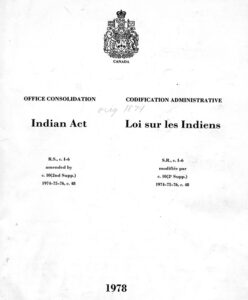
The public concluded that this matter of governance is for First Nations to work out in consultation with government through the usual channels. The process is ongoing, and it looks like the elders and the chiefs will arrive at a compromise that engages both groups in tribal politics, treaties, and resource projects. Meanwhile, indigenous politicians (members of parties and governments) are telling the white, mostly environmental protestors, in no uncertain terms, to butt out. Ellis Ross, a member of the BC legislature and of aboriginal descent, pointed out that some of the elders represented to the students the impossible dream of a return to some wilderness Arcadia that had never existed in the first place, that aboriginals need well-paying jobs just like everyone else, that the process of signing deals to create those jobs was thorough and fair, and that the benefits of aboriginal peoples having these jobs would include political power and the ability to protect aboriginal culture. He went right to what he considered the source of the problem, which was not students so much as “professors.”
In the U.S., the longer it takes BLM to focus on working with politicians over policy, and on campaigning for sympathetic politicians and parties with the best policies, the longer the indiscriminate rioting and the attacks on national symbols goes on, the more the protests will seem like meaningless, random acts of anger and revenge. How this could play out in the immediate future is indicated by Trump’s July 3 speech at Mt. Rushmore. It was one of his better speeches in the sense that it had enough conciliatory remarks mixed in with the usual stupid threats to give the majority of those attending the sense that Trump just might be on their side. It was also delivered in a symbolic setting, with the threatened heads of Washington, Jefferson, Lincoln and Roosevelt in the background (though the Republican Governor of South Dakota, Kristi Noem, assured the public that they will be protected from beheading on her watch).
The President’s speech alluded to BLM protesters referring to their objective as cancel culture, indicating that he or his advisors have picked up on the objectives of BLM’s post-colonialist contingent: “They’re taking down everything and they call it ‘cancel culture.’ I don’t think it’s a beautiful term, but it’s actually very descriptive. . . . They want to cancel everything. They want to cancel the good and the bad. They started off by canceling things that were controversial, and I actually said years ago. . . . ‘Well, does that mean that George Washington and Thomas Jefferson are next?’ And it turns out that . . . . I was sort of half-joking, and people are now saying ‘Trump was right.’ These people are crazy. They’ve gone stone-cold crazy.”
Roughly put by a bad president and a worse human being, but he has a point.